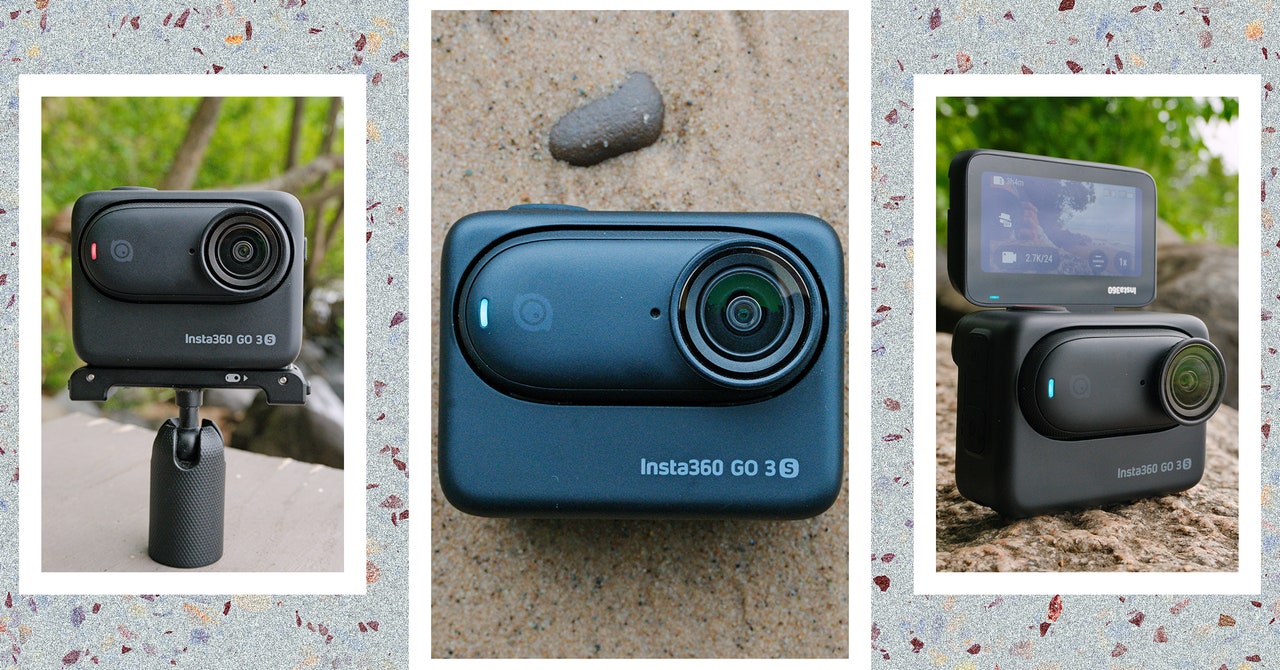Insta360 Go 3S Review: Tiny, Fun, and 4K Footage Leave a comment
Insta360’s Go 3 was an extremely enjoyable motion digital camera. It might morph from a extra conventional GoPro-like digital camera to a novel, pendant-style wearable. It made pictures doable that you just simply could not get with extra conventional GoPro-style cameras.
This yr, the corporate launched the Go 3S. The up to date digital camera provides help for 4K video, increased bit charges for smoother video, and improved battery life.
Sensor Enhancements
Externally the Go 3S is tough to tell apart from the Go 3. They’re the identical measurement, the rear flip-up display is unchanged, and the USB-C port is in the identical spot. The primary seen distinction is the lens guard, which is greater and thicker. I like this variation as a result of it makes it a lot simpler to drag the lens portion out of the Motion Pod, as Insta360 calls the physique portion of the design.
The one different minor exterior adjustments I discovered are the more-textured, easier-to-grip edges for the digital camera lens portion and the ability and Q buttons on the aspect. In any other case, all the numerous adjustments within the Go 3S are contained in the digital camera.
{Photograph}: Scott Gilbertson
The headline characteristic of the Insta360 Go 3S is undoubtedly the 4K video. I mentioned in my evaluate of the Go 3 that “I by no means as soon as observed the two.7K footage from the Go 3 being 2.7K, which is to say, except you shoot side-by-side with a [4K camera], most individuals would by no means be capable of inform the picture high quality distinction.” I stand by that. However whenever you are placing 2.7K aspect by aspect with 4K in the identical video, you may inform the distinction. As an illustration, I at all times discovered it tough to combine footage from the Go 3 with footage from my GoPro, which I usually shoot in 5.3K. That is the place the true attraction of the brand new Go 3S lies. The 4K footage does objectively look higher (although once more, you have to put it aspect by aspect to see it). Extra importantly, it mixes naturally with 4K footage from different cameras just like the GoPro Hero 12 (8/10, WIRED Recommends) or the Insta360 Ace Professional (8/10, WIRED Recommends).
What impressed me most about video from the Go 3S wasn’t a lot the extra sharpness, which is there, however the lack of pixelation, notably in movement pictures. The place the Go 3 tended to get fairly pixelated in movement pictures (e.g., whereas driving a motorbike), the Go 3S doesn’t. This enchancment is probably going due extra to the Go 3S’s increased bit price (120 Mbps versus 80 Mbps) than the 4K video, however both approach it is a welcome enchancment.
That mentioned, there’s nonetheless little bit of pixelation at increased body charges, so I like to recommend avoiding them. Taking pictures at 120 fps is not too unhealthy, however the 200 fps mode is commonly unusable. (The standard of the footage relies upon so much on lighting, however even in fairly good gentle, 200 fps is an excessive amount of for this sensor and lens to deal with properly).

